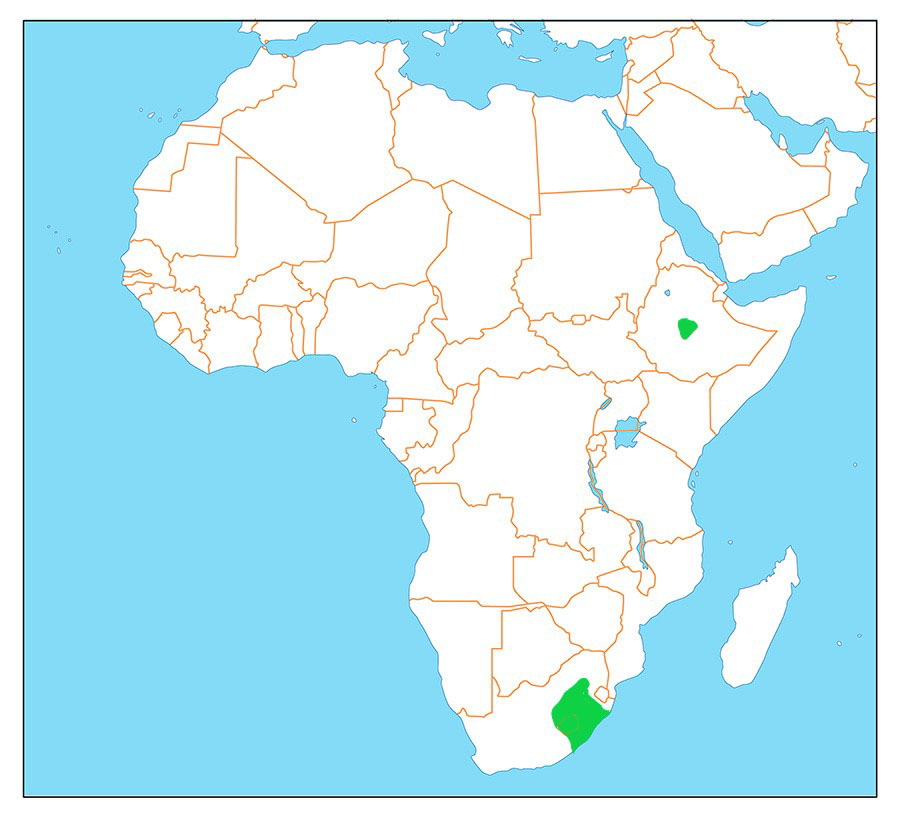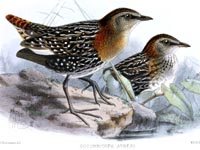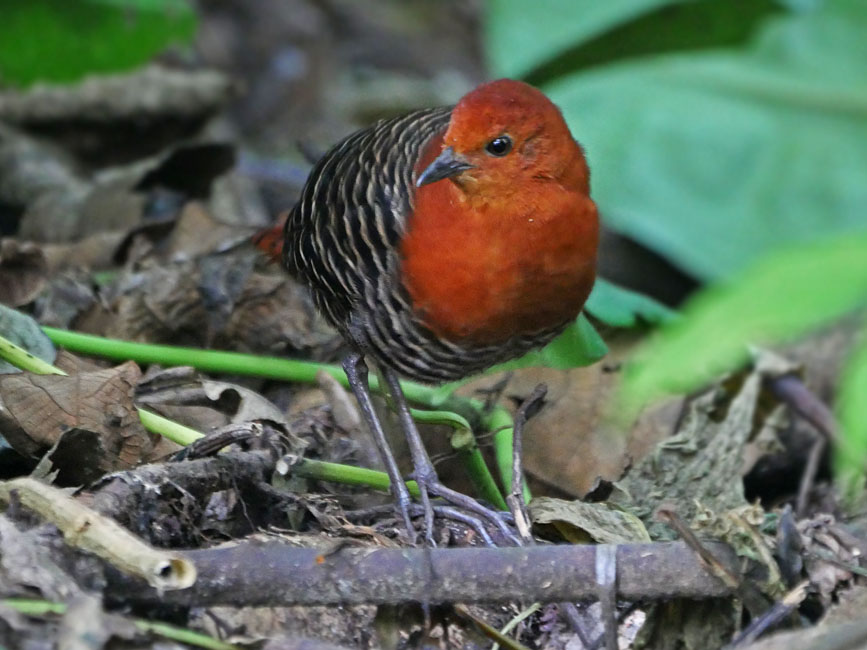THE WORLD BIRDS - An Online Bird Book
GRUIFORMES
GRUIFORMES
Gruiformes means "crane-like", The order include 14 species of large cranes, about 145 species of smaller crakes and rails, as well as a variety of families comprising a small number of species.
Guiformes has the following families
Guiformes has the following families
Order Gruiformes Family Sarothruridae
Flufftails belong to genus Sarothrura. They look like rails, act like rails, and for a long time were considered to belong to the rail family Rallidae. They are now placed in family Sarothruridae along with the Madagascar Wood-Rail and Tsingy Wood-Rail of genus Mentrocrex. New World wood-rails, only distantly related, are in the Rallidae family. The Maagascar wood-rails are much larger than the flufftails. There are four species of forest-rails in genus Rallicula. Some also place the forest-rails in Sarothrura, but that will not be done here.
The flufftails are related to the rails, but DNA studies have shown that the flufftails even more closely related to finfoots. Seven flufftails are found in sub-Saharan Africa, and two are found in Madagascar. They are secretive birds, like dense vegetation, and are very difficult to observe. As would be expected with such a name, some flufftail specieshave relatively soft tails. Eggs of all species that have been observed are white, which is unusual for rails. Their nests are built of grass, leaves, and other vegetation.These nests are bowl shaped and sometimes have a makeshift dome. They may be on the ground, on a tuff of grass, or even a meter off the ground,
Genus Mentocrex
Rail,_Madagascar Wood- Mentocrex kioloides
Description: The Madagascar wood-rail has a grey patch around its eyes which distinguishes it from the Tsingy wood-rail. The call is similar to a loud whistle. Its cup-shaped nest which is made out of grass and leaves is place about 4 m off the ground. At 28 cm in length it is slightly smaller also.
Range: Northern and eastern Madagascar.
Habitat: Rain forests, marshes; also dry forests.
Diet: Insects, seeds, frogs.
Conservation status: Least Concern.
Image by: 1) John Gerrard Keulemans 2) Allan HopkinsRange: Northern and eastern Madagascar.
Habitat: Rain forests, marshes; also dry forests.
Diet: Insects, seeds, frogs.
Conservation status: Least Concern.
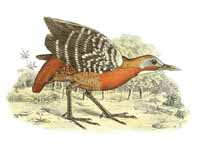
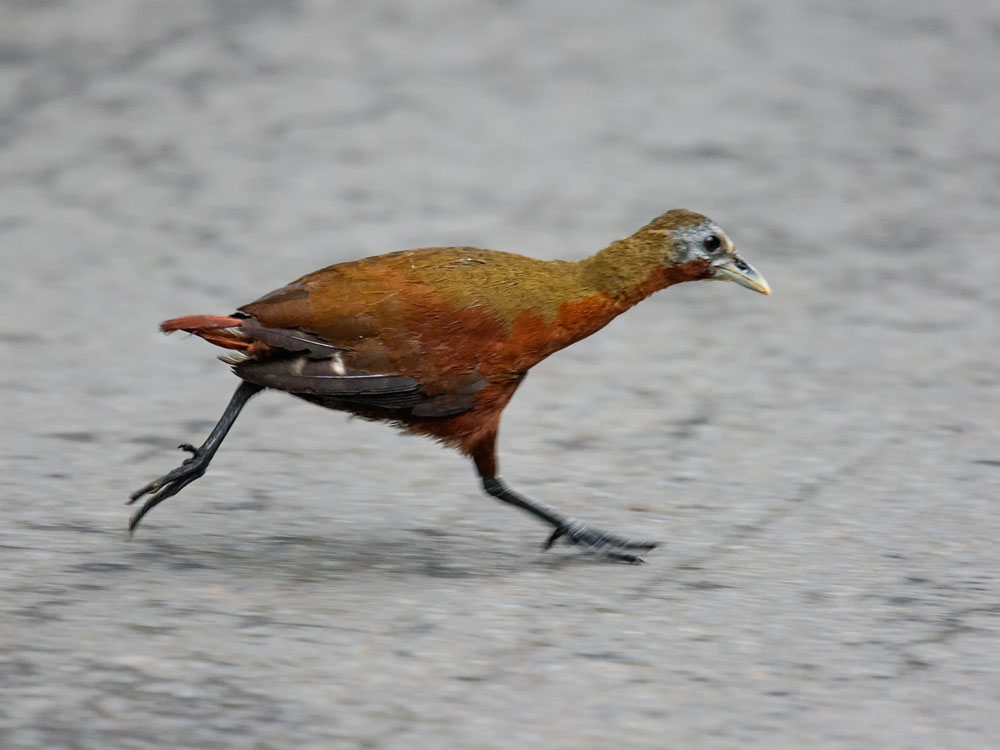
Rail,_Tsingy_Wood- Mentocrex beankaensis
Description: The Tsingy wood-rail has grey-brown upperparts and head with some rufous showing. The head is darker and the throat is white. The underparts are rufous. The Tsingy wood-rail is 30 cm long.
Range: West-central Madagascar.
Habitat: Rocky canyons.
Diet: Data lacking.
Conservation status: It is listed as Vulnerable because of its small range and small populations
Range: West-central Madagascar.
Habitat: Rocky canyons.
Diet: Data lacking.
Conservation status: It is listed as Vulnerable because of its small range and small populations
Genus Sarothrura
Flufftail, Buff-spotted Sarothrura elegans
Description: The male buff-spotted flufftail has mainly black upperparts with dense buff spots. The head, neck, and breast are orange-red. The rest of the underparts are black with dense buff spots. The female has brown upperparts with small buff spots. Her breast is also brown with dark barring; the belly is pale with brown bars.
Range: Sub-Saharan Africa.
Habitat: Forest, forest edges, woodlands, brush.
Diet: Insects, spiders, worms, seeds. Forages in leaf litter, grass, open ground.
Conservation status: Least Concern.
Image by: 1) Cteoahko1982 2) Dick Daniels - Nairobi National Museum, Kenya 3) Bart Wursten - Zimbabwe 4) David_Bygott - TanzaniaRange: Sub-Saharan Africa.
Habitat: Forest, forest edges, woodlands, brush.
Diet: Insects, spiders, worms, seeds. Forages in leaf litter, grass, open ground.
Conservation status: Least Concern.
2 - 4) Male
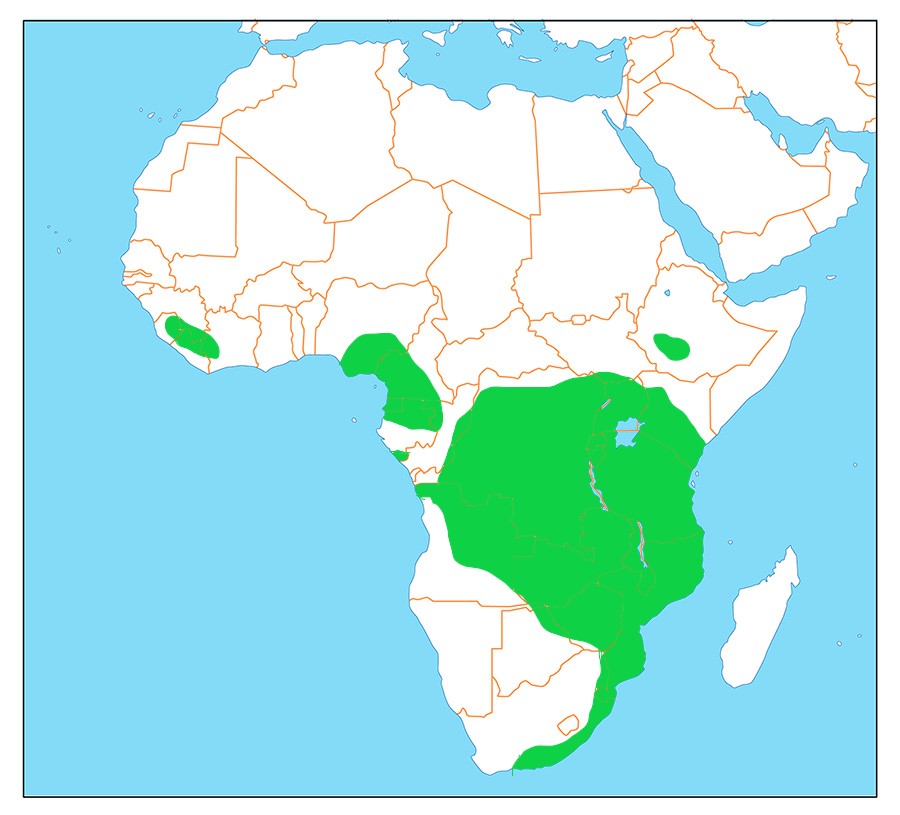
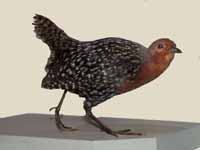
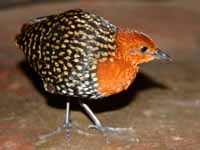
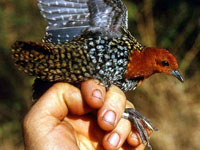
Flufftail,_Chestnut-headed Sarothrura lugens
Description: The male chestnut-headed flufftail has black upperparts with fine black streaks. The head is chestnut color with a whitish chin and throat. The underparts are also black with fine white lines. The female is similar with broader white lines.
Range: Angola, Cameroon, DR Congo, Gabon, Malawi, Rwanda, Tanzania, Zambia.
Habitat: Areas with grasses which may be treed or not treed.
Diet: Seeds. insects. Need more data.
Conservation status: Least Concern.
Image by: 1) Cteoahko1982Range: Angola, Cameroon, DR Congo, Gabon, Malawi, Rwanda, Tanzania, Zambia.
Habitat: Areas with grasses which may be treed or not treed.
Diet: Seeds. insects. Need more data.
Conservation status: Least Concern.

Flufftail, Madagascar Sarothrura insularis
Description: The male Madagascar flufftail has black upperparts with thin yellow streaks. He has a chestnut head, neck, breast, and tail. The underparts are black with white streaks. The female has dark upperparts with buff streaks and bars.
Range: East half of Madagascar.
Habitat: Humid forests.
Diet: Insects, seeds.
Conservation status: Least Concern.
Image by: 1) Cteoahko1982 2) John Gerrard KeulemansRange: East half of Madagascar.
Habitat: Humid forests.
Diet: Insects, seeds.
Conservation status: Least Concern.
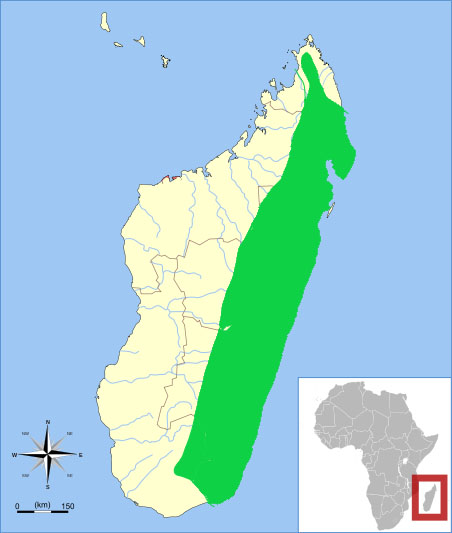
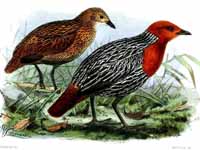
Flufftail_Red-chested Sarothrura rufa
Description: The male red-chested flufftail has a red head, neck, upper-mantle, and upper-breast. The rest of the plumage is black with white streaks. The female has dark brown upperparts, with a lighter head, and even lighter underparts. She has fine spots. The red-chested flufftail is about 16 cm long.
Range: Sub-Saharan Africa.
Habitat: Dense vegetation. Usually wetlands, sometimes dry grass. Swamps.
Diet: Insects, larvae, spiders, earthworms, seeds.
Conservation status: Least Concern.
Image by: 1) Cteoahko1982 2,3) Peter_Ginn - South AfricaRange: Sub-Saharan Africa.
Habitat: Dense vegetation. Usually wetlands, sometimes dry grass. Swamps.
Diet: Insects, larvae, spiders, earthworms, seeds.
Conservation status: Least Concern.
2) Female 3) male
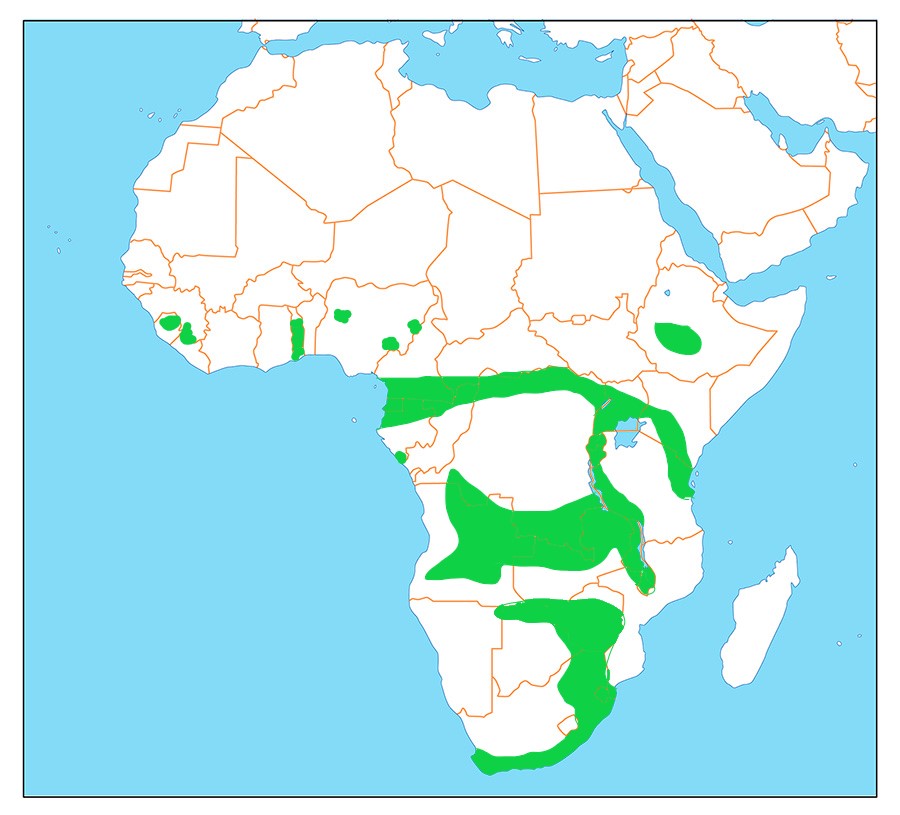
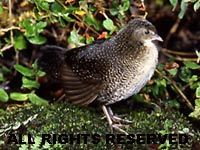
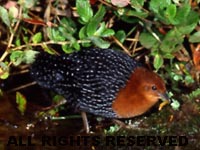
Flufftail, Slender-billed Sarothrura watersi
Description: The male slender-billed flufftail has a chestnut mantle, head, neck, and breast. The rest of his plumage is dark brown except for a little white on the throat. The female has brown upperparts. The rest of her plumage is lighter brown with the chin, throat, and center of the breast whitish. The range of the Madagascar flufftail overlaps and because flufftails are secretive there could be difficulty in identification. The Madagascar flufftail has less chesthut plumage.
Range: Madagascar. Observed in only a few spots.
Habitat: Highland swamps and agricultural land with dense undergrowth of grass, rice, ferns.
Diet: Data lacking.
Conservation status: It is listed as Endangered because of its very small range. That said, because of its stealth there may be a larger population than anticipated.
Image by: 1) Cteoahko1982 2) John Gerrard KeulemansRange: Madagascar. Observed in only a few spots.
Habitat: Highland swamps and agricultural land with dense undergrowth of grass, rice, ferns.
Diet: Data lacking.
Conservation status: It is listed as Endangered because of its very small range. That said, because of its stealth there may be a larger population than anticipated.
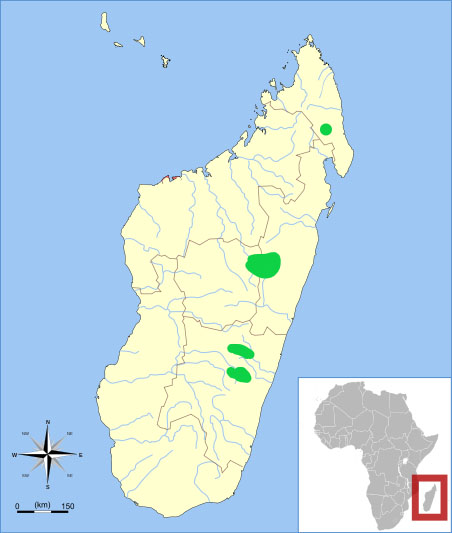

Flufftail,_Streaky-breasted Sarothrura boehmi
Description: The male streaky-breasted flufftail has some rufous on the head, neck, and upper-breast. It has a dark mantle with some thin white steaks. The upper-breast and flanks are dank and steaked white. The rest of the underparts plus flight feathers are white. The female has dark grey upperparts with pale bars. Her head is grey instead of rufous. The streaky-breasted flufftail is about 16 cm long.
Range: Central Africa.
Habitat: Wet grasslands.
Diet: Seeds, insects.
Conservation status: Least Concern.
Image by: 1) Cteoahko1982Range: Central Africa.
Habitat: Wet grasslands.
Diet: Seeds, insects.
Conservation status: Least Concern.
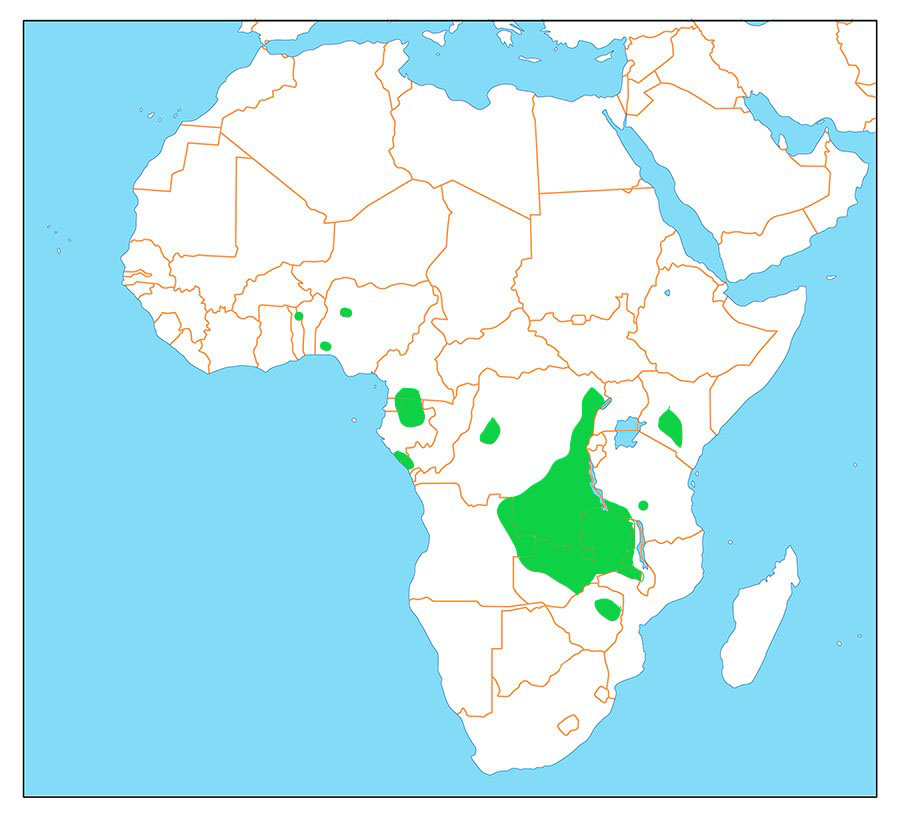
Flufftail,_Striped Sarothrura affinis
Description: The male striped flufftail has a chestnut head with a white throat. Except for a chestnut tail, the rest of the plumage is mainly black with white stripes. The female has brown replacing black with lighter streaks. It is closely related to the Madagascar flufftail. The striped flufftail is up to 15 cm long.
Range: Scattered parts of east Africa.
Habitat: Alpine grasslands, usually near water.
Diet: Insects, spiders, seeds.
Conservation status: Least Concern.
Image by: 1) Cteoahko1982 2) Andrew_Smith Range: Scattered parts of east Africa.
Habitat: Alpine grasslands, usually near water.
Diet: Insects, spiders, seeds.
Conservation status: Least Concern.
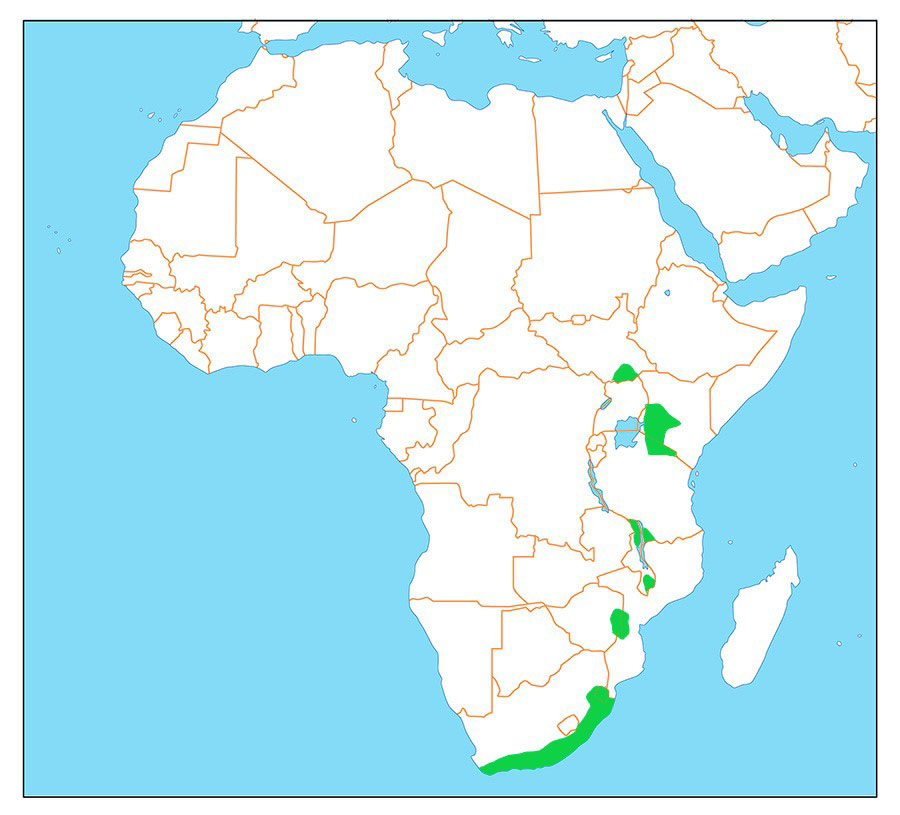
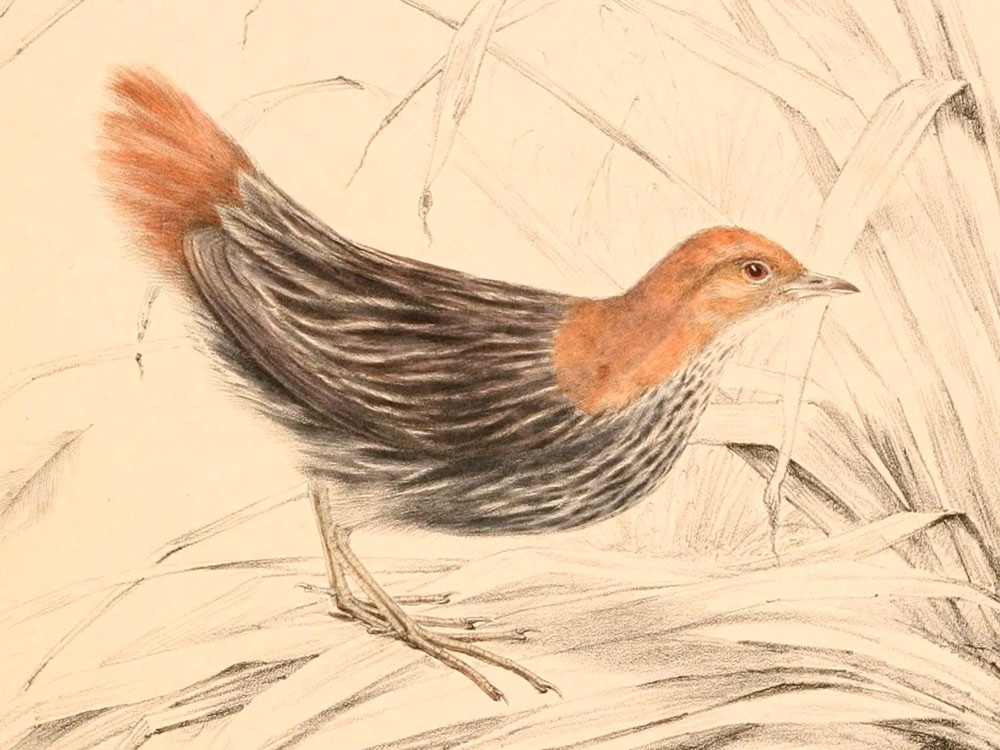
Flufftail,_White-spotted Sarothrura pulchra
Description: The male white-spotted flufftail has a red head, neck, upper-mantle, breast, and tail. The rest of his plumage is black with white spots. The female has chestnut plumage where the male has red. The rest of her plumage is black with chestnut barring. The white-spotted flufftail is 16 to 17 cm long.
Range: Cwntral Africa.
Habitat: Tropical rainforest with dense undergrowth, swamps.
Diet: Insects, larvae, spiders, worms, seeds
Conservation status: Least Concern.
Image by: 1) Cteoahko1982 2, 3) Francesco_Veronesi - Ghana 4) Nik_Borrow - UgandaRange: Cwntral Africa.
Habitat: Tropical rainforest with dense undergrowth, swamps.
Diet: Insects, larvae, spiders, worms, seeds
Conservation status: Least Concern.
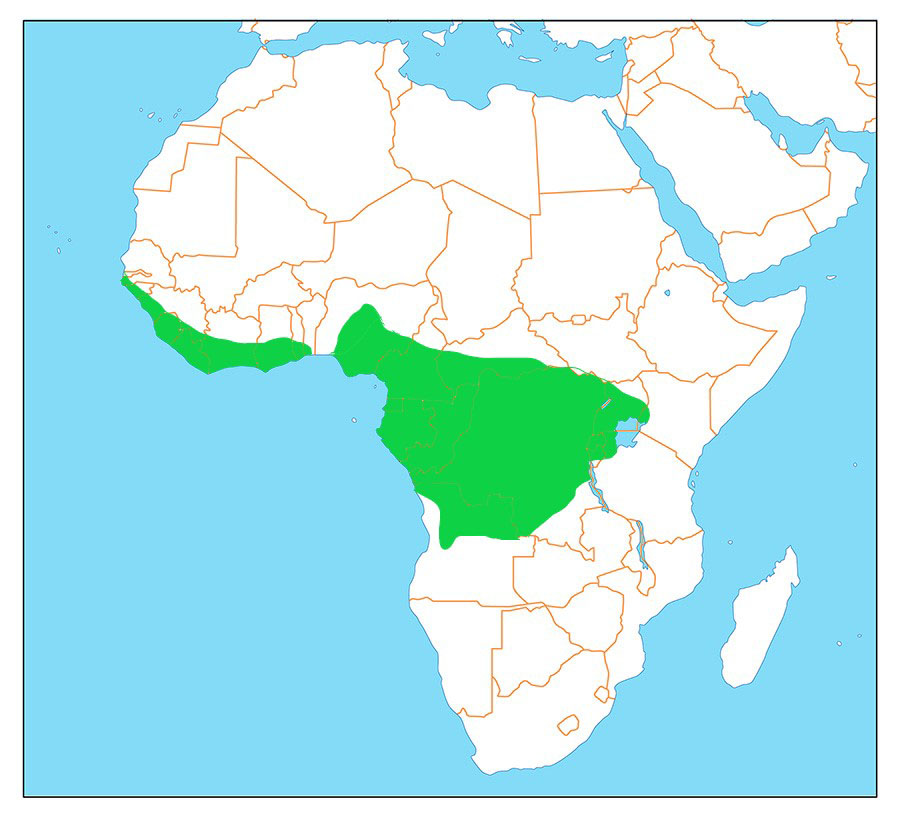



Flufftail_White-winged Sarothrura ayresi
Description: The white-winged flufftail has a white wing patch that can be seen when in flight. And it is easy to flush than other flufftails. The heads of both sexes are dark - not chestnut. The male has more chestnut on the neck, nape, and breast than the female.
Range: Ethiopia, South Arica, Zambia, Zimbabwe.
Habitat: High altitude grasslands that are seasonally wet.
Diet: Insects, larvae, spiders, worms, seeds.
Conservation status: It is listed as Critically Endangered with a population less than 250 and a small range. Drainage of swamps is problematic.
Image by: 1) Cteoahko1982 2) John_Gerrard_Keulemans 3) Clive KaplanRange: Ethiopia, South Arica, Zambia, Zimbabwe.
Habitat: High altitude grasslands that are seasonally wet.
Diet: Insects, larvae, spiders, worms, seeds.
Conservation status: It is listed as Critically Endangered with a population less than 250 and a small range. Drainage of swamps is problematic.
